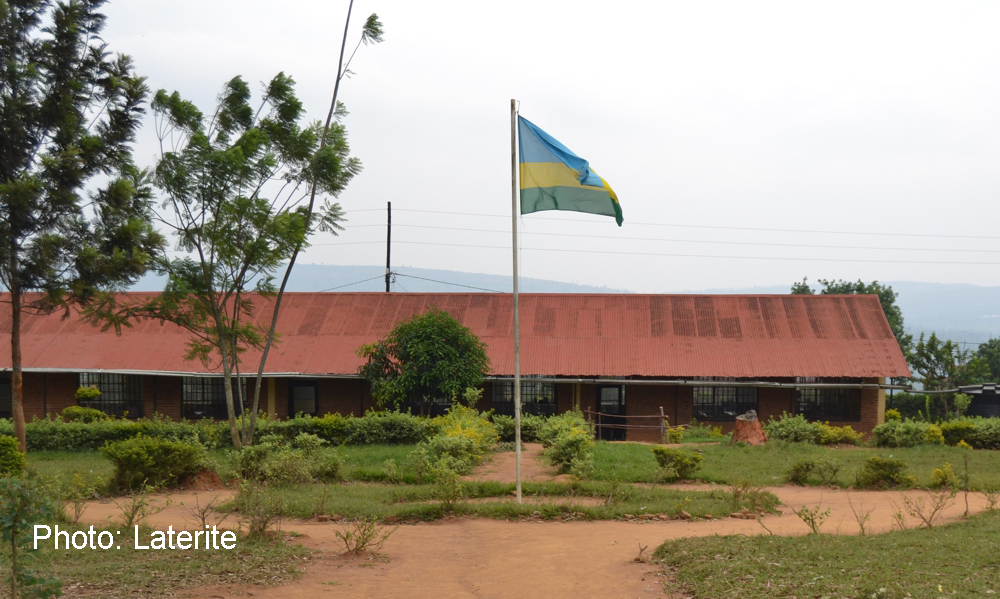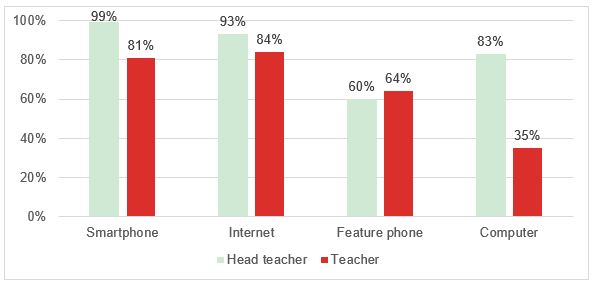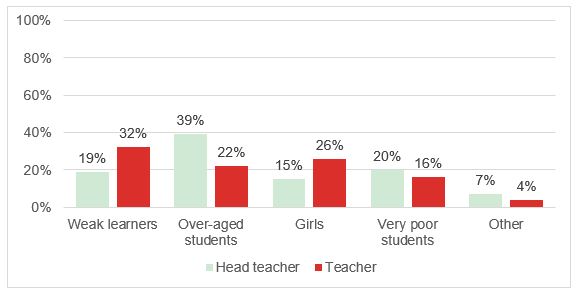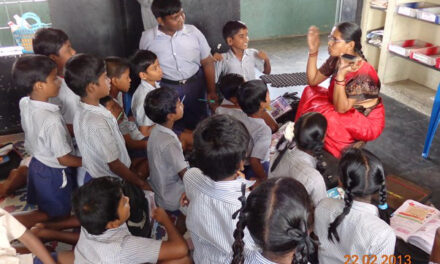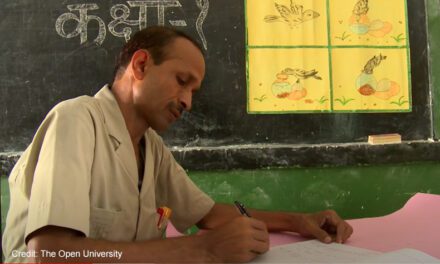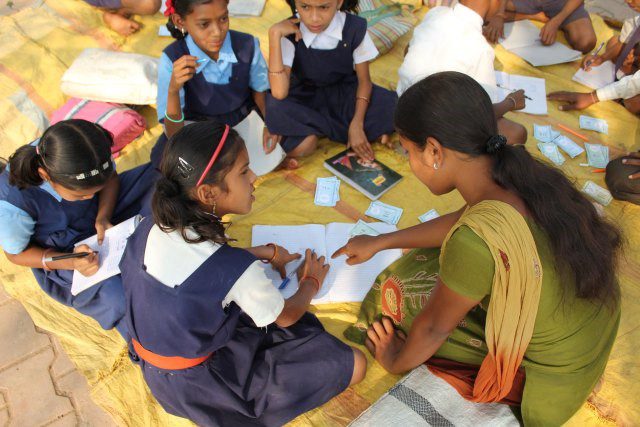This blog was written by Laterite and the Research for Equitable Access and Learning (REAL) Centre at the University of Cambridge, who are working together as learning partners on the Mastercard Foundation’s Leaders in Teachers initiative in Rwanda.
On 14 March 2020, the Government of Rwanda announced the closure of all schools in the country due to the COVID-19 pandemic. In November 2020, after eight months of closures, secondary and upper primary schools started reopening in phases, with students returning to the grade they were in before school closures (so effectively repeating the year).
During school closures, the Rwandan Government undertook several initiatives to ensure students’ learning could continue. The Rwanda Education Board (REB) started broadcasting education programmes on national TV and radio, and launched a YouTube channel called REB eLearning with content for students. REB also strengthened its online learning websites to support remote learning for teachers. The platform also provides professional development for teachers and school leaders focused on digital skills.
In August, during the school closures, Laterite and the REAL Centre at the University of Cambridge conducted phone interviews with head teachers and teachers to assess their experience of supporting students during school closures, and issues to consider when schools reopen. We interviewed 298 school leaders (head teacher or director of studies) and 297 STEM teachers, with two main goals:
- To measure the effects of school closures on continued learning: to what extent were teachers prepared to use technology to support remote learning; and how effective was this remote learning?
- To determine preparedness for school reopening: what adaptations were needed to resume classes in school; and what can be done to mitigate future health outbreaks?
In this blog, we highlight some of our key findings from the phone surveys. The findings provide useful insights for policy-makers and school leaders as schools reopen, both in Rwanda and in other countries that are facing similar questions and challenges. The full report is available online.
Supporting students’ learning remotely
Less than half (43%) of teachers reported supporting students with remote learning during school closures. Teachers at schools of excellence were more likely to provide support (66%) than at other schools (39%). And younger, or less experienced, teachers were more likely to be providing support to students. The most common type of support teachers provided was mentoring parents and answering questions from students.
Around 69% of head teachers assisted teachers from their schools to support student learning during school closures. This support included providing guidance on how to use radio to support students, and how to use platforms such as Google Drive and WhatsApp. Guidance to head teachers mainly came from the Rwanda Education Board (REB) and Building Learning Foundations (BLF). Support to teachers came from their school, the African Institute for Mathematical Sciences (AIMS) and REB.
Teachers’ access to ICT equipment and prior experience of using it for distance learning support
The extent to which head teachers and teachers were able to support learning was likely to be dependent on their own access to appropriate resources. The majority of head teachers and teachers reported having access to ICT equipment required for supporting students from a distance (see Figure 1). Most reported having access to smartphones and internet (over 80%). However, fewer teachers than head teachers reported having access to computers: 35% of teachers, compared to 83% of head teachers.
Few teachers reported prior relevant experience of engaging in teaching and learning activities remotely: around 18% of teachers and 41% of head teachers reported online experience of learning, teaching or online school management prior to the pandemic. The most common experience was taking a course or receiving training online. Male teachers were more likely to have online experience: 22% of male teachers versus 9% of female teachers. Two thirds of the head teachers and teachers with prior online experience reported that this experience was helpful in adapting during school closure.
Experience of engaging with online learning during school closures
The majority of head teachers and teachers believed that the remote lessons on all platforms were effective, and most reported accessing lessons: 65% had seen at least one online and TV lesson, 92% had listened to a radio lesson, and 40% used the Unstructured Supplementary Service Data (USSD)-based quiz. Around three quarters of teachers reported being confident in their ability to effectively deliver distance learning.
Teachers suggested making remote lessons more interactive and relevant, more engaging, and holding them more frequently to improve the experience for students. Head teachers and teachers identified students from poor families and rural areas as benefitting the least from distance learning.
Continuing professional development during school closures
Nearly half of head teachers and a third of teachers engaged in continuing professional development during school closures. Head teachers who engaged in these activities themselves were more likely to support teachers at their school to engage also. For teachers, prior online experience was positively associated with engaging in continuing professional development. For head teachers, access to computers and internet were further positively associated.
Preparedness for school reopening
In August 2020, while decisions about when and how to reopen schools safely across the country were still being made, less than half of head teachers (45%) felt their schools were equipped with the necessary handwashing facilities (soap and clean water) to prevent the spread of COVID-19 when schools reopened. 70% of boarding schools felt equipped, compared to 42% of day schools. We note that this reflects a snapshot in time: head teachers likely felt more prepared when schools reopened in November than they did when the surveys were carried out in August.
Head teachers and teachers believed students dropping out, worsening student performance and teenage pregnancy would be the most common challenges when schools reopened. Weak learners, over-aged students, girls and poor students are groups of students that head teachers and teachers felt were most likely to drop out (see Figure 2). For returning students, teachers and head teachers believed that motivation for learning and discipline will have been most affected by school closure.
Challenges for continuing learning as schools reopen
Head teachers and teachers were challenged with quickly having to adopt new skills during school closures to provide continued learning and support to students. Many reported confidence in effectively delivering distance learning, despite having limited experience with online learning prior to the pandemic. Though almost all schools have since reopened, the ongoing pandemic may lead to more school closures in 2021, as has already been the case in other countries. In any case, it will be important to apply the lessons learned in 2020 to ensure that teachers are equipped to support ongoing student learning, and schools are prepared for the changing learning environment.
In particular, efforts to provide ICT resources to head teachers and teachers, and support them to carry out distance learning, should focus on teachers at less well-equipped schools, such as day schools and non-schools of excellence, as well as female teachers. Strategies are needed to encourage all students to return to – and stay in – school, with extra support for the most at-risk groups, such as weak learners, over-aged students, girls and poor students. Ensuring students can catch up on learning missed during school closures will also be critical, especially for those who benefit least from distance learning, such as students from poor families and rural areas.

